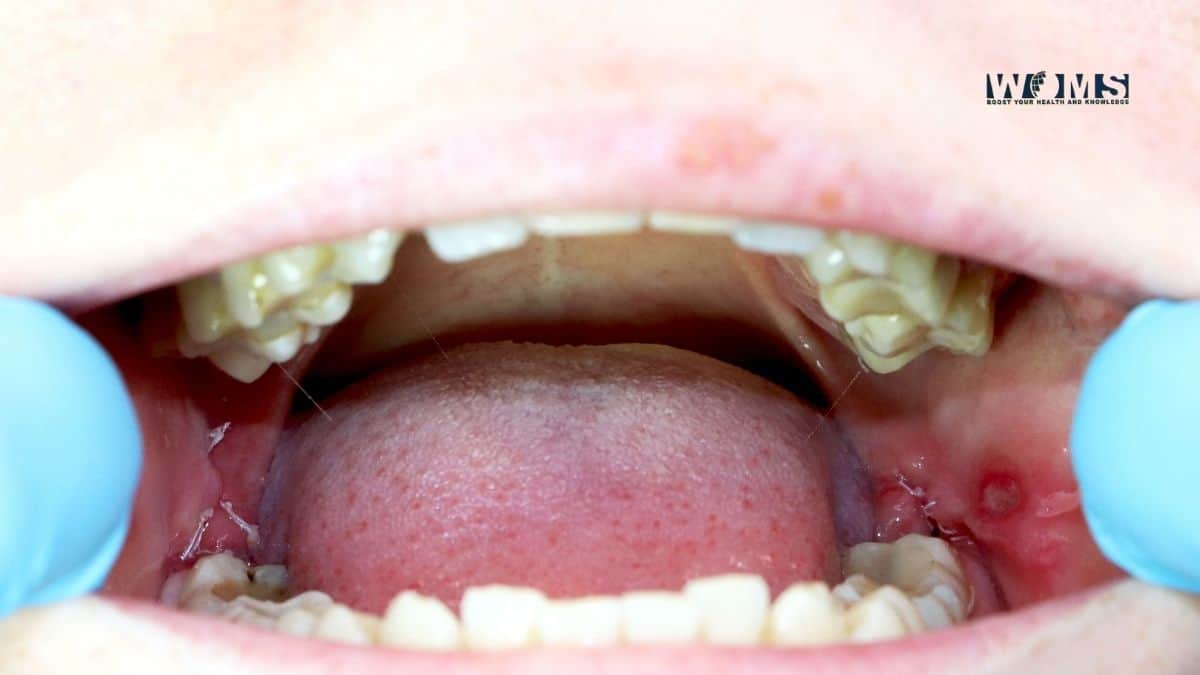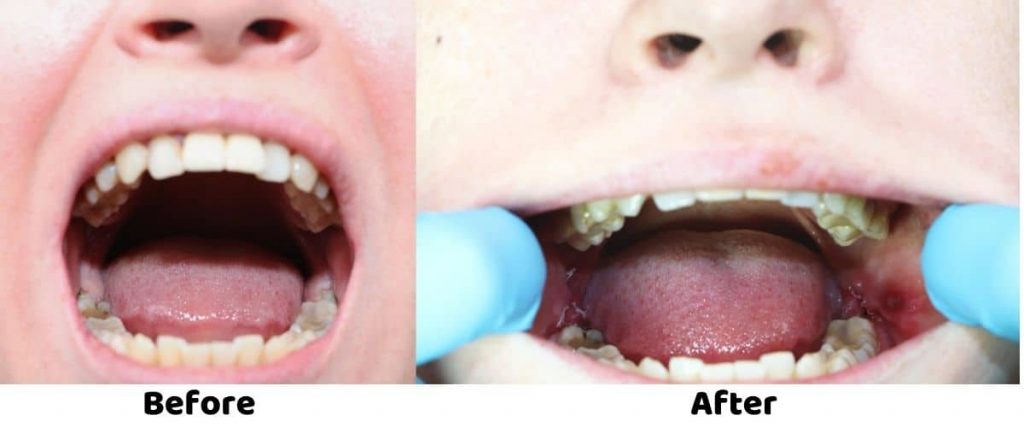Wisdom Teeth Stitches

Wisdom teeth extraction mostly requires surgery. This surgery includes incisions and stitches. After the removal of wisdom teeth, stitches are for the stabilization of gum flaps and attachment.
Stitches assist in the proper recovery of the incisions. In addition, it also helps to prevent infection of the surgical site. In this way, stitches are helpful to improve the healing process.
The most common wisdom teeth stitches are usually dissolvable. After a suitable time, these sutures dissolve and disappear. Moreover, your dentist can also use non-resorbable sutures. For this, your dentist will tell you to visit again for the removal of wisdom tooth stitches.
Wisdom teeth stitches
There are two types of wisdom teeth stitches used after the extraction. The main difference between them is their resorbing feature. One dissolves away on its own (resorbable), and the other doesn’t dissolve (non-resorbable).
Dentists select the type of stitches according to the situation. Let us highlight the important aspects of wisdom teeth stitches.
Stitches that dissolve on their own (resorbable)
Resorbable stitches offer the benefit that you don’t need to visit the dentist for their removal. In addition, your body’s enzymes metabolize them and dispose of their byproducts. Resorbable stitches are natural and synthetic.
Natural: catgut
Synthetic: polyglycolic acid, lactic acid copolymer, etc)
Stitches that doesn’t dissolve (non-resorbable)
These are the stitches that your body can’t degrade. In addition, these stitches maintain their strength longer than resorbable stitches. For the removal, you just need to visit the dentist. There are some common examples of non-resorbable stitches.
- Silk stitches
- Nylon stitches
- Polypropylene stitches
How long does it take to dissolve wisdom teeth stitches?
Wisdom teeth stitch automatically disappear once the wound heals. The time varies for the dissolution of wisdom teeth stitches.
Usually, dissolvable stitches disappear within a week. It may take a month or so to dissolve stitches completely. This feature depends on various factors that determine the resorbing capacity of stitches.
Some of them are as follows :
- Extent of the extraction procedure
- Stitch material
- Stitch size and technique
These are the factors that play a role in resorbing wisdom teeth stitches. In addition, these stitches also help in maintaining the bacteria-free environment of the surgical site. Moreover, these stitches also impart a positive impact on the wound healing process.
Which precautions to follow after wisdom teeth stitches?
There is a set of precautions that are important to follow after extraction. In addition, you must focus on your dentist’s advice.
Every patient has different anatomy and a different surgical site. So, it is important to follow your dentist’s precautions. These are some common precautions after the extraction and stitches.
- After 24 hours, gently rinse your mouth with warm salty water. Just take the water and open your mouth to fall out.
- Don’t spit or swish after the surgery as it may disturb the clot formation.
- Avoid using a toothbrush or floss for five to seven days after surgery.
- If your dentist prescribes you antibiotics, you must complete the course for improved healing.
Other important instructions to follow:
- Don’t use a straw for drinking.
- Don’t smoke
- Taking hot liquids should be avoided
- Don’t do any strenuous exercise
- Don’t drink alcoholic beverages
How much does it take for complete healing of the wound?
After the removal, stitches are used to close the surgical site incisions. These wisdom teeth stitches dissolve after a couple of weeks. By this time, the wound should be completely closed without any opening in the gums.
If you notice any opening or bony chips in your gums after stitches dissolve, you need to visit your dentist. These bony chips can hinder the proper healing of the wound.
What to do if your wisdom teeth stitches are coming out?
In some cases, you may feel a loose stitch just coming out from gums. In addition, you may also notice that your stitch has fallen out.
This is not a matter of concern. But, if you are feeling some symptoms as mentioned below, you need to visit your dentist as soon as possible.
- Any sign of infection, redness, or swelling
- Open wound
- Bleeding from the wound
If you are feeling any irritation due to stitches, you must inform your dental surgeon. Don’t try to cut or pull the stitch. These stunts may harm your healing process. In addition, it may cause injury to the surgical site.
What are the complications of wisdom teeth stitches?
Nowadays, infections of surgical sites are not common. But if you don’t follow instructions properly, it may induce various complications.
There are some of the main complications that may arise after surgery.
- Severe pain
- Inflammation around the surgical site
- Pus discharge from the surgical site
- Fever is an indication of infection.
- Pus or blood in nasal discharge
- The foul taste of the mouth
- Irritation of the surgical site
- Dry socket (painful condition after extraction when clot fails to develop)
If you find any symptoms of infection, immediately visit your dentist. Your dentist will examine the surgical site and will indicate some antibiotics to resolve the infection.

Follow up visit
Even if you are feeling normal and having no complications, you just need to go for a post-operative dental visit. Your dentist will confirm the resorption of the stitches. In addition, your dentist will also evaluate the soft tissue around the extraction site.
Also Read: Can Wisdom Teeth Grow Back?
Conclusion
Wisdom teeth removal is a common surgery in dental practice. It requires wisdom teeth stitches to properly heal the wounds.
These wisdom teeth stitches are mostly resorbable. These stitches resorb after a period of seven to ten days. In some cases, it may take a longer time.
You only need to follow the proper instructions of the dentist. In addition, keep on noticing the changes in your oral cavity. Don’t try to do anything that can irritate clot formation and may induce any complications.
If you find any abnormal feelings, you must inform your dentist regarding the situation.
Frequently asked questions (FAQs) :
Is it necessary to have wisdom teeth stitches after extraction?
No, everyone doesn’t need to have it. Some people require a minor surgical procedure that doesn’t require incisions. In these cases, wisdom teeth stitches are not necessary following the extraction of wisdom teeth.
Can we feel wisdom teeth stitches in the mouth?
Yes, you can feel your wisdom teeth stitches once the effect of local anesthesia disappears. The effect of local anesthesia disappears after one to two hours. You can easily feel and notice wisdom teeth stitches.
Is there any chance of a dry socket after wisdom teeth stitches?
There is an incidence of one dry socket case for every ten wisdom teeth extraction. This is an extremely painful situation that can delay the healing process. It helps in reducing the risk of dry sockets. Patients with dry sockets have an increase in discomfort after the surgery.
How do stitches affect the healing process?
Wisdom teeth stitches help to minimize the distance between gum incisions and aid in healing. In addition, these stitches also maintain contact with the underlying bone and strengthen the wound to improve healing. Moreover, these wisdom teeth stitches also assist in wound hemostasis.




